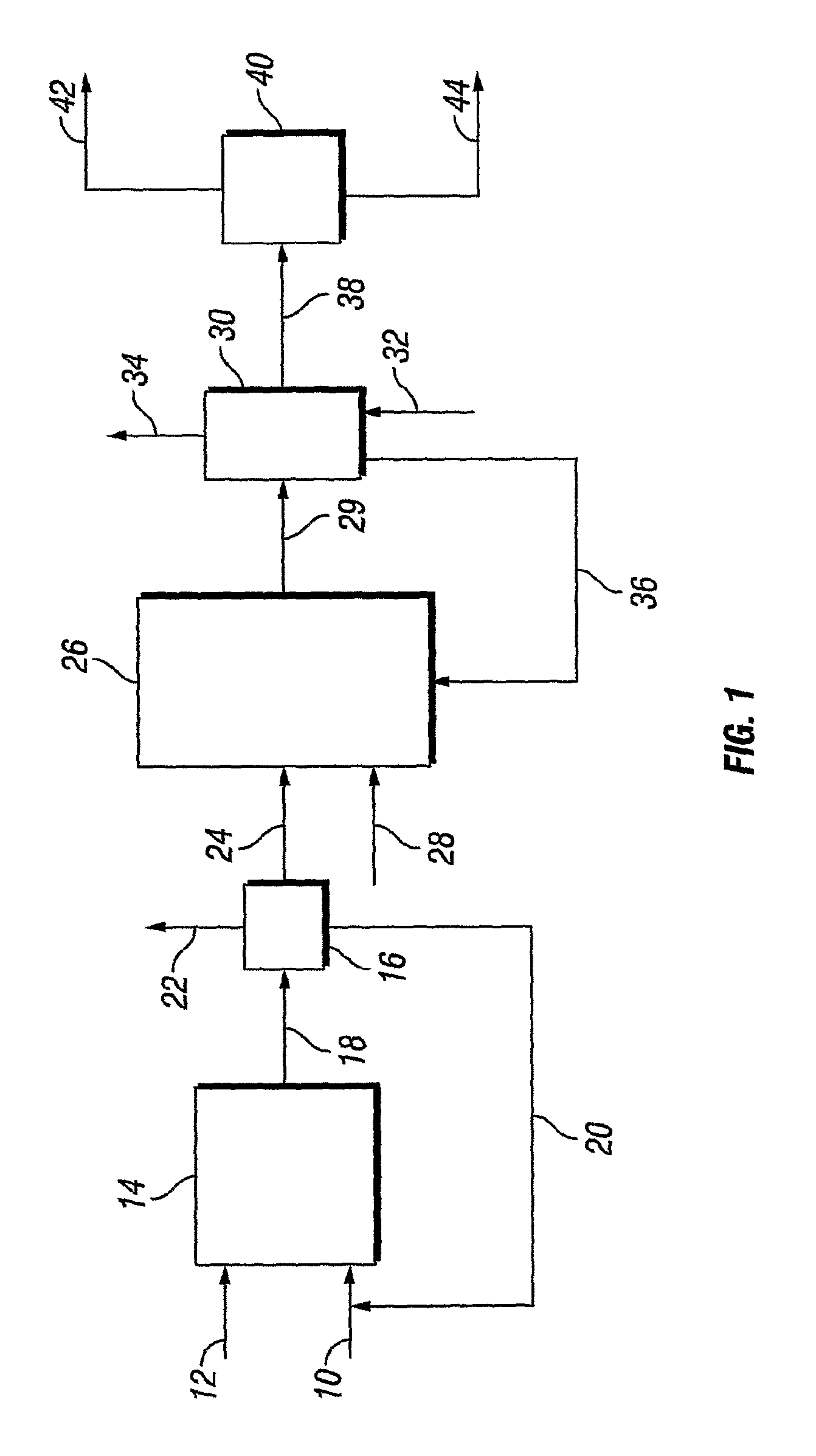Conversion of Alkylhalides Into Alcohol Alkoxylates
a technology of alkyl halide and alkyl alcohol, which is applied in the direction of detergent preparation with liquid ingredients, ether preparation, organic chemistry, etc., can solve the problems of reducing yield, poor yield, and high cost of process, and achieves the effect of enhancing oil recovery
- Summary
- Abstract
- Description
- Claims
- Application Information
AI Technical Summary
Benefits of technology
Problems solved by technology
Method used
Image
Examples
example 1
Separation of Hexane, Bromohexane And Dibromohexane
[0046]A mixture of 5 grams of hexane, 5 grams of 1-Bromohexane and 5 grams of 1,2 dibromo hexane were mixed and placed in a 50 ml round bottom flask. A 200 mm Vigreux distilling column and a short path distillation column were attached to the top of the round bottom flask and heat was applied to the round bottom flask via a heating mantle. When the mixture reached 70° C., the hexane was distilled from the mixture, condensed and collected in the receiving flask. After 5 grams had been collected, no more material was condensing. The round bottom flask was heated to 160° C. and the 1-Bromohexane started to distill. 5 grams of material were collect in the receiving flask. Finally, the material remaining in the round bottom flask was tested by gas chromatography (GC) and was shown to be 1,2-dibromo hexane.
example 2
Conversion of Dibromohexane To Monobromohexane
[0047]To demonstrate the conversion of a dibromohexane to a monobromohexane, 2 grams of 2,3-dibromohexane, 0.1 grams of nickel acetate and 100 mls of cyclohexane was added to a small bolt head autoclave. The autoclave was flushed 3 times with 50 psi of nitrogen and then charged with 55 psi of Hydrogen. The vessel was allowed to sit at 25° C. for two hours to activate the nickel. After two hours, a sample was taken from the autoclave via a dip tube and showed only 2,3-dibromohexane. The autoclave was heated to 180° C. and allowed to react for 60 minutes. A sample was taken and showed that half of the starting material had been converted to a mixture of the 2 and 3 bromohexane isomers with only about 1% being converted all the way to hexane.
example 3
Conversion of 2-BromoOctane And 2″-Hydroxy-2′ethoxy-2 ethanol to 2″′-Hydroxy-2″ethoxy-2′ethoxy-2-octane
[0048]To a three neck round bottom flask was charged 200 grams of DEG or a DEG / TEG mixture, 4 grams of an alkyl halide and 1.5 grams of catalyst (see Table 1). This is the DAC process. In some experiments sodium citrate was added (see Table 1). In one neck was placed a stirring rod, in the second neck was placed a thermal well and in the last neck was placed a reflux condenser with a nitrogen flow across the top of the condenser leading to a bubbler. Heat was applied to the round bottom flask via a heating mantle. The mixture was heated to 180° C. for 10, 30 or 60 minutes (see Table 1). The reaction was cooled down to room temperature and 100 mls of n-hexane was added. To this solution, 400 mls of saturated NaCl solution was added. Mixture was transferred into a separator funnel and was extracted 3 more times with 100 mls n-hexane. Hexane was dried with MgSO4 and filtered. The wate...
PUM
 Login to View More
Login to View More Abstract
Description
Claims
Application Information
 Login to View More
Login to View More - R&D
- Intellectual Property
- Life Sciences
- Materials
- Tech Scout
- Unparalleled Data Quality
- Higher Quality Content
- 60% Fewer Hallucinations
Browse by: Latest US Patents, China's latest patents, Technical Efficacy Thesaurus, Application Domain, Technology Topic, Popular Technical Reports.
© 2025 PatSnap. All rights reserved.Legal|Privacy policy|Modern Slavery Act Transparency Statement|Sitemap|About US| Contact US: help@patsnap.com

